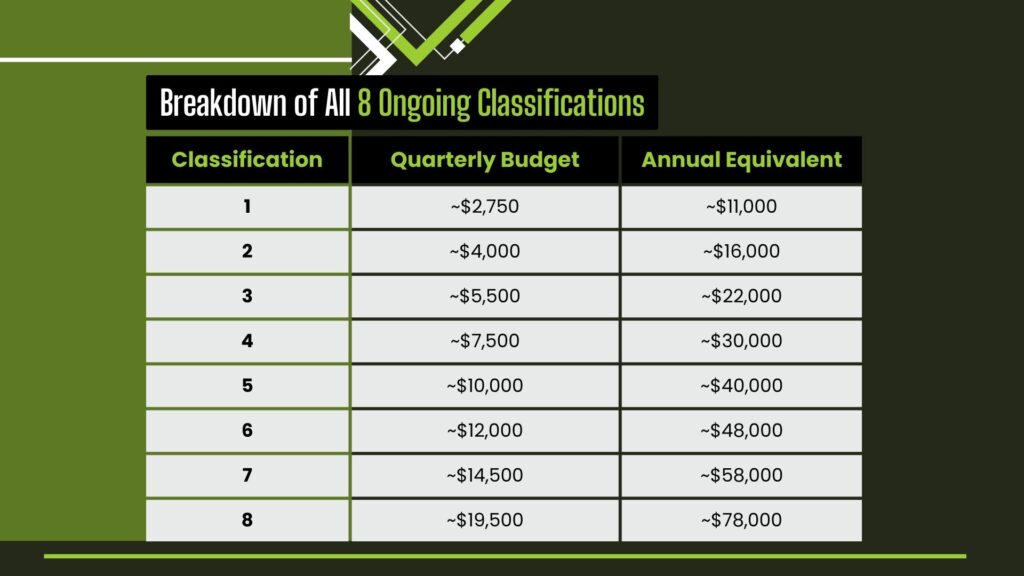Launching 1 July 2025, the Support at Home program will replace the current Home Care Packages (HCP) and Short-Term Restorative Care programs. It introduces an 8-tier classification system, offering more targeted support based on clinical needs.
The top tier provides up to $78,000 annually—an important change aimed at better supporting those with complex care needs. For providers, these changes to aged care packages offer a chance to deliver more flexible, tailored care at home.
Understanding the $78K Funding Level
The Support at Home program brings a new approach to funding, with up to $78,000 available annually for those needing higher levels of care. Here’s what aged care providers need to know about the classification system, funding structure, and how it compares to current packages.
Overview of the New Support at Home Classification System
The upcoming Support at Home program replaces the current 4-level HCP system with a more detailed 8-tier classification model. Each tier is based on clinical need, informed by over 22,000 assessments from the Independent Assessment Tool (IAT) live trial held between April and July 2023.
At the top end, Classification 8 provides up to $78,000 per year—or around $19,500 per quarter—for individuals with complex care requirements. This funding is delivered quarterly, giving both providers and participants more flexibility to manage services across the year. Unspent funds can be carried over, up to a cap of $1,000 or 10% of the quarterly budget, whichever is higher.
By better matching care levels to individual needs, this model complements broader reforms, including changes to residential aged care, and supports older Australians to remain at home longer.
Comparison with Current Level 4 Home Care Package
The current Level 4 HCP offers around $61,000 annually, while the new top tier under Support at Home provides up to $78,000—a 28% increase. This uplift supports more complex care needs and gives providers and recipients greater flexibility in how funds are used throughout the year.
Breakdown of All 8 Ongoing Classifications
Here’s a breakdown of the eight ongoing support classifications under the new program, showing how funding scales with assessed care needs:

Short-Term Classifications (Separate from Ongoing Budgets)
In addition to ongoing support, the Support at Home program includes targeted short-term classifications to address specific care needs.
Restorative Care Pathway
Provides up to $6,000 over 12 weeks, or up to $12,000 for eligible individuals. It’s aimed at helping people regain function and avoid long-term care. This can be used alongside ongoing support, without service duplication.
End-of-Life Pathway
Offers up to $25,000 over 12 weeks for individuals with a life expectancy of under three months. It replaces the ongoing budget during this period and can only be accessed once. After this, participants may be reassessed for a suitable ongoing classification.
Assistive Technology and Home Modifications (AT-HM) Scheme
Funded separately, this covers high-cost equipment and home changes. There’s no need to save from existing budgets to access these supports.
These pathways reflect broader aged care changes in Australia, offering more targeted and flexible care options.
Preparing for the Transition
With the Support at Home program set to roll out, aged care providers need to act now to ensure a smooth shift from the current system.
- Staff Training: Upskilling your team is essential to meet the demands of higher care classifications. Investing in training now will help ensure your workforce is ready for more complex care delivery.
- Infrastructure Upgrades: The new system relies on updated IT processes and reporting tools. Upgrading your internal systems will help align your operations with Support at Home requirements.
- Client Communication: Clear communication with clients and their families is key. Keeping them informed about the changes to aged care packages and how these will enhance their support helps build trust and ease the transition.
- Expert Guidance: At SAH Consulting, we work directly with aged care providers to navigate the shift to the new Aged Care Act. Our goal is to support your business through the transition so you can focus on delivering high-quality care where it matters most.
The Bottom Line
The introduction of the $78,000 funding level marks a major shift in how aged care is delivered—offering greater flexibility and better support for those with complex needs. For providers, it’s an opportunity to enhance service quality and scale up care in a way that meets modern expectations.
To fully realise these benefits, it’s essential to start preparing now. From understanding the changes in aged care packages to upgrading internal systems, early action will put your organisation in the best position when the Support at Home program begins.
For more detailed guidance, we encourage you to refer to the Support at Home handbook. And if you need expert help navigating the transition, SAH Consulting is here to support you every step of the way.
